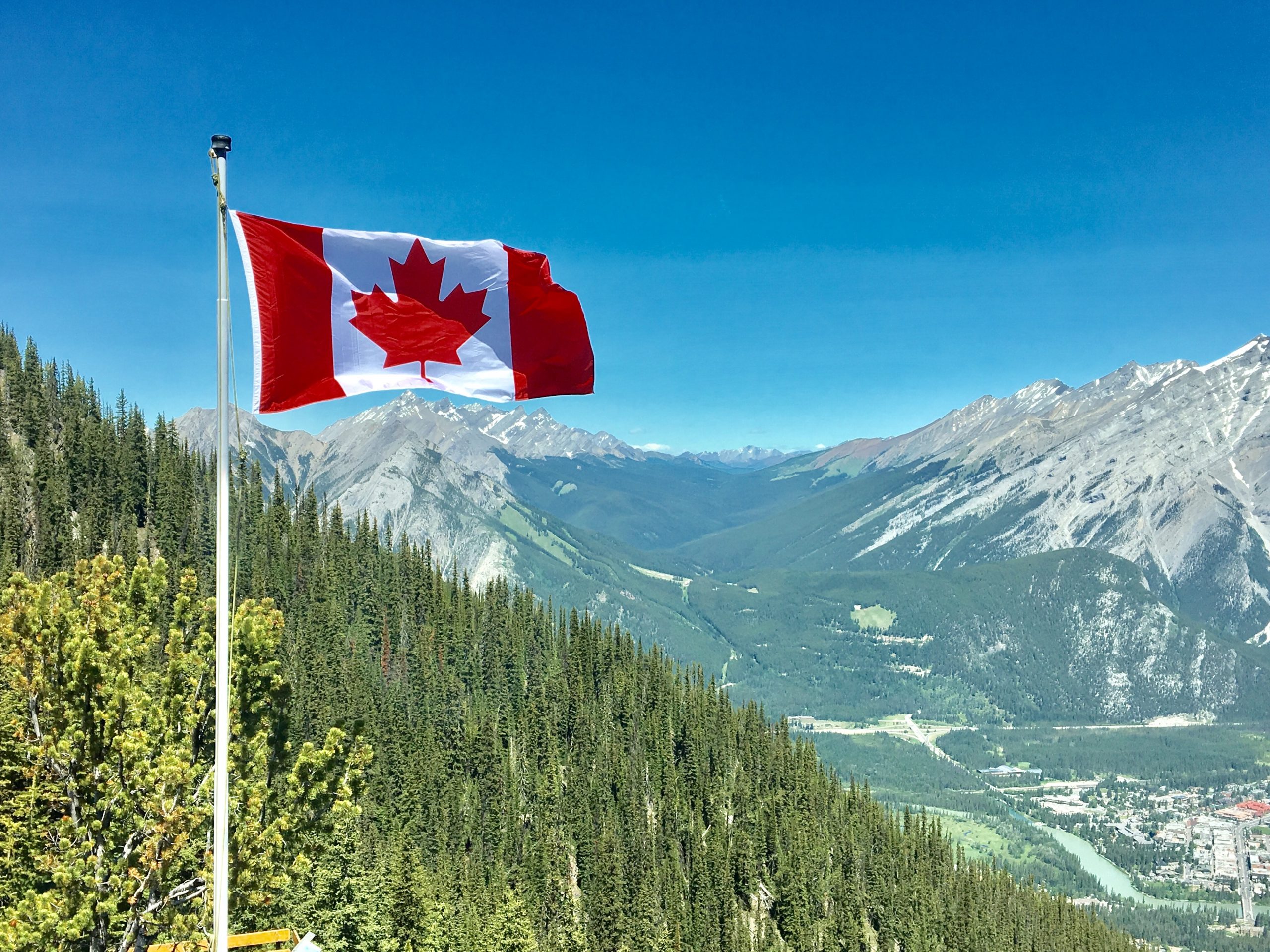
By Robert J. (Bob) Harper
In today’s world of fast pace change and online (non- committal) communication, I am totally convinced the majority of people on earth today have forgotten the intention of making a promise (giving your word).
I have spent the past 6 ½ years working every single day to fulfill a promise I made to a friend. It was, what I thought, a fairly straight forward and simple task which I now understand was a life changing commitment.
I made this promise to a person whom I respected and admired my entire life, I knew he would not ask me to make such a promise if it would be impossible to keep.
So here I am 6 ½ years later, having spent more than 15,000 hours reviewing over 40,000 documents and talking with several hundred Canadians in very important positions to ensure my promise is never compromised.
The promise I made to my friend the Honourable John Ross Matheson was to bring awareness to all Canadians the true facts and detailed credit of exactly who and how our beloved Canadian Maple Leaf Flag was brought to fruition in 1964/65. John asked me, Bob Harper, an average blue collar worker with no political or social prowess to undertake the process which would acknowledge the many loving hands who worked for nearly 100 years to bring a truly unifying National Flag of Canada into being.
In the 52 years since the birth of the most recognized symbol of Canada in the world there have been myths and overlooked contributions from individuals and credits exaggerated by others. These myths and stories have dominated the assumed historical account of who and how the Canadian Maple Leaf Flag was created.
John Ross Matheson admitted he had made some errors in judgement in providing certain credits and was saddened to have realized the details of the work done by so many dedicated Canadians had been overlooked and not honoured in the proper way in our annals of history.
Mr. Matheson had made 2 attempts to rectify this injustice by bringing forward detailed credits in an October 1968 keynote speech at the Heraldry Society of Canada’s Annual meeting and again in 1991 in an acceptance speech at RMC. In both of these cases his plea to set the record straight was not heeded.
Mr. Matheson accomplished so much in his life and had given Canada so much, he believed in the phrase “your word is your bond” and this meant keeping your promises.
In July 1961, John Ross Matheson made a promise to Lester B. Pearson to begin researching what it would take to bring a National Flag of Canada to fruition. This promise was a commitment to a man who had made a promise to himself (Pearson) to do whatever it would take to bring an unmistakable symbol of Canada into being.
What I have realized over the past 6 ½ years is you do not have to be a Ph.D. or a Rhodes Scholar to bring the truth to the forefront. What you really need is persistence, tenacity, and the help of a lot of people. Asking for help has never been my greatest attribute, but it is now !!!
I have been able to fulfill this promise with the help and support of my wife Sue, our adopted “Auntie Anne” and some very generous friends. I have also been provided with support from our community, MP, MPP and no less than 7 Government of Canada Departments and agencies.
I have had conversations with some of the highest-ranking Government of Canada officials and department heads as well as leaders in the areas of Heraldry, History, Heritage and Education and highly regarded journalists. My unorthodox methods of reaching out to some of these truly exceptional Canadians was sometimes funny and I know I probably did not provide the level of respect their positions were used to getting, but, I got it done.
I would like to bring forth the result of exactly what my promise to the Honourable John Ross Matheson has produced as a document with in this story a chronological and detailed account of who and how our beloved Canadian Maple Leaf Flag was brought to fruition in 1964/65.
More than 52 years after the Birth of the Canadian Maple Leaf Flag the following chronological, factual account has been compiled and verified by exhaustive research of archival documents, journals, magazine articles, newspaper reports and interviews with some of the last surviving participants responsible for bringing the “NOW” most recognized symbol of Canada in the World to fruition in 1964/65. This research was conducted by Robert J. Harper and his team of dedicated professionals over the past 6 years to ensure the request of the “Father of Our Flag” John Ross Matheson was honoured. Mr. Matheson wrote in an acceptance speech in 1991 his desire that the many loving hands who had worked for nearly 100 years to bring a unifying National Flag of Canada to fruition be recognized and honoured. The following provides this recognition.
- 1895/96 Edward M. Chadwick – Lawyer- Heraldry/History enthusiast who first recommended to the Canadian Government in 1895/96 a National Flag for Canada with the Maple Leaf being the favoured emblem. REF, U of T library
- February 4th 1919 Major – General (later Sir) Eugene Fiset – First person to suggest in writing February 4th 1919, the emblem of Canada be “a single red maple leaf on a white field” with 2 red borders. (Armorial Bearings). REF, Matheson files, LAC, RHSC archives October 1968 Matheson Speech
- 1921 King George V – Proclaimed Canada’s official colours as Red & White. REF, LAC
- 1925 Prime Minister McKenzie-King – Requested submissions for a National flag but failed to proceed with the contentious issue. REF, LAC
- 1946 Paul Martin Sr. – Headed a committee which set the standards of a National Flag of Canada, this committee brought forth a proposal but was not pursued by Parliament. REF, LAC
- 1948-64 George Beley – Friend and advisor to John Ross Matheson on all things relating to heraldry, flags and honours from 1948 through 1975 in Brockville Ontario. Beley was one of the founding pioneers of the Heraldry Society of Canada. REF, RHSC, JRM memoirs
- 1956-65 Lester B. Pearson – Prime Minister and Nobel Peace Prize winner who dedicated his efforts to bring a National Flag to Canada through the Parliamentary process in the 1960’s. REF, LAC
- 1960-61 Members of the Liberal Party of Canada who were responsible for drafting the wording of the National Flag of Canada policy. REF LPC archives
- 1961-65 John Ross Matheson – Member of Parliament/ Flag Expert who was responsible for bringing all of the suggestions, designs and details of the National Flag of Canada to fruition from 1961-65. REF, LAC, Flag Committee Archives
- 1963/64 George Bist – Advertising executive who spent many hours communicating his input to Government of Canada personnel relating to the need and design of a National Flag of Canada. It was Mr. Bist’s suggestion of the exact proportions of the 2 times length as height as well as the white centre section being 2 times the size of the red borders. He also was responsible for the sizing of the maple leaf to all of the other proportions. REF, Flag Committee Archives
- Sept 10 – October 22, 1964 Members of the Flag Committee of 1964- All 15 Members of Parliament who worked diligently to bring a recommended National Flag of Canada to Parliament to be voted on in 1964. REF, LAC
- March 1964 George Stanley – Made the suggestion to John Ross Matheson of a single red maple leaf on a white field be the basis of the National Flag of Canada (recycled Fiset concept) in 1964. REF, Flag Committee Archives
- 1964 Alan Beddoe – Government of Canada Artist and Heraldry expert who presented Prime Minister Pearson with his own design for a National Flag of Canada which became known as the “Pearson Pennant” and was the beginning point of the “Great Flag Debate” in 1964. REF, Flag Committee Archives
- October 1964 Arthur Lower – Professor Lower was one of several presenters of information directly to the Flag Committee in October of 1964. His moving statements relating to the opportunity to bring unity to all Canadians through a National Flag was most interesting. REF, Flag Committee Archives
- October 1964 Conrad Swan – Provided John Ross Matheson with expert advice on the heraldic and historical considerations of a National Flag. REF, Flag Committee Archives
- October 1964 Fortescue Duguid- Military historian/heraldry expert who presented his input and views of the characteristics and principals of a National Flag for Canada to the Flag Committee in 1964. REF, Flag Committee Archives
- October 1964 Patrick Reid – The head of the design team at Expositions Canada who was requested to become involved in the final design and creation of the Canadian Maple Leaf Flag as we know it today. REF, LAC
- Ken Donovan – Working with the team from Expositions Canada, Mr. Donavan was asked to find a company to sew several prototype flags on Friday November 6th, so the Prime Minister could actually fly them over the week-end. Due to the fact it was late on a Friday Mr. Donovan could not find a company to execute this task immediately. He requested his daughter to complete the task because she had a sewing machine and was always ready to help.
- Joan O’Malley – On Friday November 6 at approximately 8pm Joan O’Malley began working on 3 prototype flags; she sewed until close to midnight to complete all 3. These 3 prototype flags were then delivered to the Prime Minister for his review. REF, JRM, J O interview
- November 9, 1964- the final design of the Canadian Maple leaf Flag was produced around 2:30 PM by the team of Jacques Saint Cyr (artist) Patrick Reid (Manager of Design) and John Ross Matheson MP (flag project coordinator) and sent to the Privy Council Office for approval. Alan Winship then made arrangements on Wed. November 10th to send the sketch to Bruck Mills in Cowansville Quebec to have the first prototype of the Canadian Maple Leaf Flag produced. The first prototype was produced on November 16, 1964 and delivered to the Privy Council Office on November 17.
- November 1964 – June 1966 Dr. Gunter Wyszecki (NRC team)- The involvement on the National Research Council of Canada team began in the wind tunnel testing of the prototype flags in November of 1964. Gunter Wyszecki was also responsible to research the scientific standard of the colours of the National Flag of Canada from February of 1965 to June of 1966. Dr. Wyszecki and his dedicated team of scientists created the very first scientific standard for colour of a national flag. There are more than 500,000 shades of red and this team instituted the exact colour of red we, as Canadians admire in the Canadian Maple Leaf Flag flown around the world today. REF, LAC, NRC Archives
- December 9, 1964 Lucien Lamoureux – Deputy Speaker of the House of Commons who accepted a motion from the floor of the House of Commons to bring the discussions and debate of the National Flag of Canada to a vote and invoking closure. REF, Hansard Journals
- December 9, 1964 Leon Balcer – Conservative Member of Parliament from Quebec who requested a motion of closure by the Government on the “Great Flag Debate” REF, Hansard Journals
- December 9, 1964 Real Caouette – Social Credit Member of Parliament who seconded the motion put forth by Leon Balcer to invoke closure of debate and call a vote on the National Flag of Canada. REF, Hansard Journals
- 1964/65 Canada’s 26th Parliament – It was one of the most vicious and divisive debates in the history of our Canadian Parliament. The Great Flag Debate raged on for months in the House of Commons. The final outcome was a 163-78 vote in favour of the National Flag of Canada being accepted as the Canadian Maple Leaf Flag on December 15,1964. This act of Parliament was beyond doubt, one of the most incredible outcomes from a minority Government in the history of Canada. From this democratic process came the most respected symbol of Canada in the world today. REF Hansard Journals
- December 15, 1964 Robert Thompson – Mr. Thompson was Member of the Creditiste Party in Parliament in 1964 and was instrumental in persuading members of his party to vote yes on the flag issue. REF, see vote Hansard Journals
- December 15, 1964 Paul Martineau – Mr. Martineau was a Conservative MP who worked behind the scenes to convince other Conservative Members of Parliament to vote yes on the flag issue. REF, see vote Hansard Journals
- December 17, 1964 – Senate of Canada approves the National Flag of Canada as the Canadian Maple Leaf Flag
- January 28, 1965 Queen Elizabeth II – Proclaimed the National Flag of Canada. This was the final piece of a process which spanned more than 96 years in the making. REF, LAC
- February 15, 1965 Archie Cairns – Pipe Major who officially piped the new National Flag of Canada from the Centre Block into Parliament was one of the world’s most respected and accomplished Canadian pipers. REF, LAC
- February 15, 1965. Joseph Secours – 26 year old RCMP officer was chosen to be the person responsible to officially raise the first National Flag of Canada on February 15, 1965. REF, Ottawa Citizen
- Governor General of Canada Georges Vanier – During the Great Flag Debate and the process to bring the Canadian Maple Leaf Flag to fruition. The Governor-General of Canada is responsible to oversee all of Canada’s symbols and Honours. REF, LAC
The foregoing account and detailed credits are a culmination of my work for the past 6 ½ years and fulfills my promise to John Ross Matheson. I have been humbled as well as proud to have worked this hard to bring this information together so all Canadians have the opportunity to know the names of the many loving hands who worked for nearly 100 years to bring the now most recognized symbol of Canada into being.
This paper is intended to provide historical information, recognition of people and organizations but most of all as the author of this paper I am hoping that each and every person who reads it will have a new found self- awareness of your values as Canadians and a true sense of what it means to make and keep a promise.
Robert J. (Bob) Harper is Executive Director of the Canadian Flag Education Centre.


